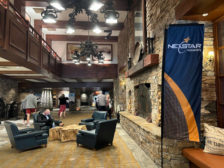Featured on Home Page
EXECUTIVE’S COLUMN
Sean Cleary: Ensure you're making the correct system selection
May 3, 2022
Scenes from the 2022 Kitchen & Bath Industry Show
After two-year COVID hiatus, first in-person industry show is a success.
April 25, 2022
CASE STUDY
Hydronic retrofit brings utility and style together
Viega products aid in residential domestic water supply and heating system renovation.
April 22, 2022
PM Profile: Air-to-water heat pumps gaining national attention
PM Columnist John Siegenthaler guest-stars on PBS’ “Ask This Old House.”
April 20, 2022
Scald prevention valves: The last line of defense
DHW recirculation system provides accurate balanced tempered water control for new hotel.
April 18, 2022
Smart plumbers embrace smart home plumbing technology
Connected products are no longer just for luxury.
April 15, 2022
Keep your content unclogged with our newsletters!
Stay in the know on the latest plumbing & piping industry trends.
JOIN TODAY!Copyright ©2024. All Rights Reserved BNP Media.
Design, CMS, Hosting & Web Development :: ePublishing














